#hyperolius
Text
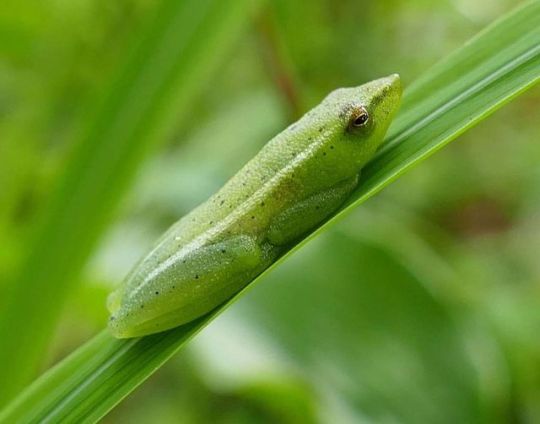
Long-nosed Reed Frog (Hyperolius nasutus), family Hyperoliidae, Zambia
photograph by André van Hecke
2K notes
·
View notes
Photo

In a brief “walking safari” during my stay at Klaserie Nature Reserve I was recently able to find and photograph a resting painted reed frog (Hylerolius marmoratus) on a…reed, obviously! Shot in situ with Nikon Z9 and Nikon Z50 macro and illuminated with natural light and Godox mf12 macro flashes. @nikonitalia @godox_global #frog #hyperolius #treefrog #southafrica #klaserieprivatenaturereserve @ilcp_photographers @ivorywilderness (at Klaserie Private Game Reserve) https://www.instagram.com/p/CoFeC-nKn5W/?igshid=NGJjMDIxMWI=
302 notes
·
View notes
Text
Yeni Bulunan 'Vraksız' Bir Kurbağa Türü Dokunarak İletişim Kuruyor
Yeni Bulunan ‘Vraksız’ Bir Kurbağa Türü Dokunarak İletişim Kuruyor
Hayvanlar çağrılar yerine, potansiyel eşleri tanımak için boğazındaki dikenleri kullanabilir.
Yeni keşfedilen bir kurbağa (Hyperolius ukaguruensis), vıraklamak yerine, dokunma duyusu yoluyla iletişim kurmak için boğazındaki dikenleri kullanabilir. CHRİSTOPH LİEDTKE
Yeni keşfedilen bir kurbağa türü hiç ses çıkarmıyor. Pek çok…

View On WordPress
#amfibi#Dikenli Boğazlı Kamış Kurbağaları#Hyperolius#Hyperolius ukaguruensis#kurbağa#sessiz kurbağa#ukaguruensis#yeni amfibi türü#yeni tür
0 notes
Note
🥚
I just found you, i think its my lucky day
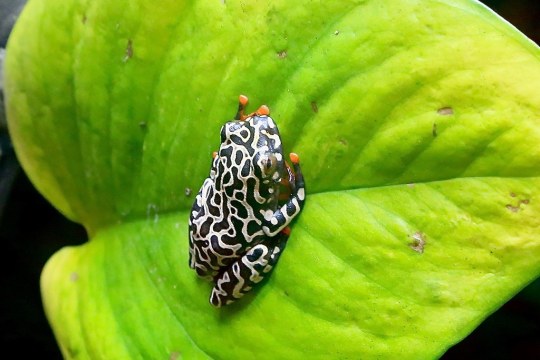
Riggenbach's reed frog!
(Hyperolius riggenbachi)
32 notes
·
View notes
Text



At Home amongst the Wachendorfia 🌱
Thursday, 30 September 2021. 🌿
#wachendorfia#butterfly lily#spotted painted reed frog#frog#wetland#indigenous#flora#haemodoraceae#hyperolius marmoratus#botanical garden#garden route#southern cape#nature#photography
0 notes
Photo

Are you trying to find ways to stay cool during the heat waves this summer? Here’s how the painted reed frog (Hyperolius marmoratus) survives when it gets too hot: It rests motionless on a leaf in a tightly-wound position which helps it retain body moisture and reduce its exposure to the Sun. It can also enter a hibernation-like state, known as aestivation, in which its metabolism rate drops by 50%! And special cells in its skin, called iridophores, reflect sunlight, resulting in a silvery-white color and acting as a sunscreen. You can spot this frog in parts of Africa including Gabon, Mozambique, and South Africa. Photo: Bart Wursten, CC BY-NC-SA 2.0, flickr #AnimalFacts #frogs #amphibians #PaintedReedFrog #dyk #aestivation #nature https://www.instagram.com/p/CgkxlWfreyD/?igshid=NGJjMDIxMWI=
1K notes
·
View notes
Text
youtube
This quick episode is an excerpt from Episode 33 – Breeding Sites, where I tracked down the famous, but probably never ever looked at Western German study about West African frogs, that Dr. Alan Grant famously alludes to, to explain why including frog DNA to fill in the gaps in Jurassic Park’s dinosaur DNA sequences, may explain how the dinosaurs are able to breed in the wild.
0:00 - Introduction
0:50 - Excerpt from the chapter "Breeding Sites."
1:44 - Protogynous Sex Change in the Reed Frog Hyperolius viridiflavus
7:44 - Clarification on what rana DNA is - it's FROG DNA.
9:20 - Exerpt from the chapter "Under Control"
10:55 - Comparing this allusion from the novel with the allusion from the film.
Thanks for watching!
#dinosaurs#jurassic park#michael crichton#youtube#dinosaur movies#dinosaur#DNA#amphibian DNA#rana#frogs#Youtube
2 notes
·
View notes
Text
mashup tourneys sideblog. you may know me as hyperolius
i'm eternally a kfad2 lover, keeping up with mwm, celestourney's biggest fan, and fairly fixated on doatk right now
0 notes
Link
Researchers discovered a new species of frog in Africa that has an unusual trait: it’s completely silent. The Ukaguru spiny-throated reed frog does not croak, sing or ribbit. Found in Tanzania’s Ukaguru Mountains for which it is named, Hyperolius ukaguruensis is among the few frogs around the world that do not vocalize to other frogs.
1 note
·
View note
Photo

Hyperolius cf. tuberlinguis by Stephen Zozaya
Mang'ula, Tanzania.
227 notes
·
View notes
Text

Common Reed Frog (Hyperolius viridiflavus), family Hyperoliidae, South Africa
photograph by Mejdi Snakes
461 notes
·
View notes
Photo

Hyperolius bobirensis, source: x
#Anura#Hyperoliidae#Hyperolius#Hyperolius bobirensis#frog#frogs#animal#animals#biology#nature#wildlife#amphibian#amphibians#zoology#herpetology#herps#fauna#critter#critters
183 notes
·
View notes
Text
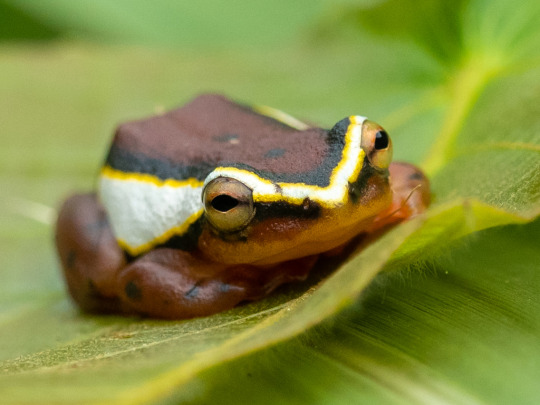
today's funky frog of the frog: Mitchell's reed frog (Hyperolius mitchelli)!!!!!!!! they live in tanzania, malawi, and mozambique. i love the v pattern on their heads! it was originally considered a subspecies of another frog!
photo by Zein et Carlo
1K notes
·
View notes
Video
Hyperolius tuberilinguis - Tinker Reed Frog. by Tyrone Ping
Via Flickr:
Hyperolius tuberinlinguis Tinker Reed Frog, From St Lucia, Kwa-Zulu Natal. www.tyroneping.co.za/amphibians/hyperolius-tuberinlinguis/
#Hyperolius#tuberilinguis#Tinker#Reed#Frog#Amphibians#Amphibian#AFRICA#African#Amazing#Animal#Adventure#Anphibian#Canon#Canon 7D#Close Up#Wild#Wild Herps#Wild Life#Wild animals#Animals#cute#creature#critter#zululand#st#lucia#www.tyroneping.co.za#Tyrone Ping#LIzard
1 note
·
View note
Photo
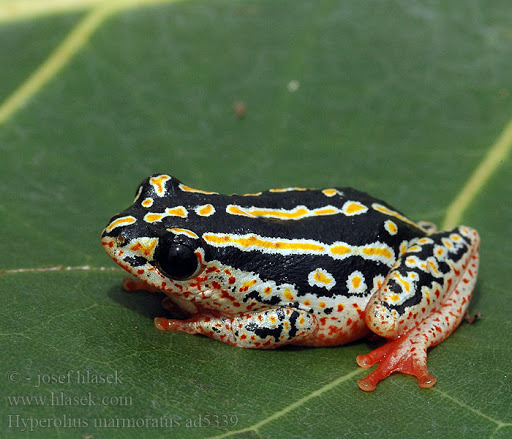

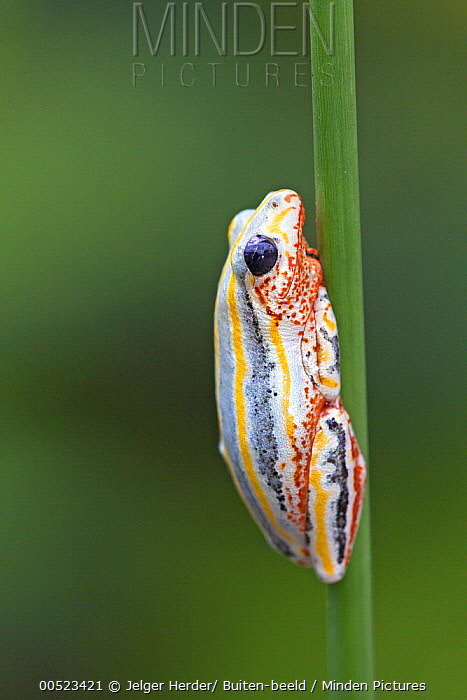






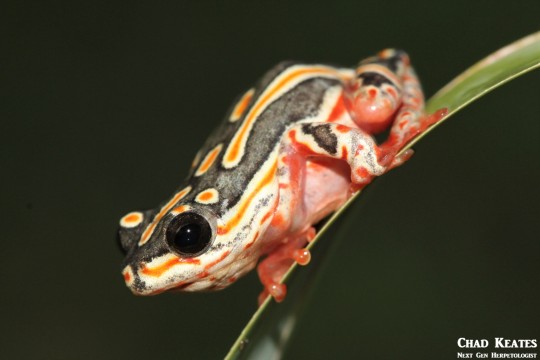
The marbled reed frog or painted reed frog (Hyperolius marmoratus) is a species of frogs in the family Hyperoliidae found in south-eastern Africa. It occurs in a wide range of natural habitats, including forests, savannas, shrublands, grasslands, rivers, swamps, freshwater lakes, and intermittent freshwater lakes. Species in the genus Hyperolius may display different colouration and patterns during day and night. Daylight colours are usually pale and drab, while their night-time appearance is colourful and eye-catching
A medium-sized Hyperolius with a maximum body length of about 33 mm (just over an inch long). The adult color pattern is extremely variable and has led to many systematic and nomenclatural uncertainties about this ‘superspecies’. The pattern varies from distinct stripes through to vermiculations, dots and splotches, and the colours of the patterns vary from dark brown or black through to yellow and peppermint green. Juvenile males appear to be overall brown during their first breeding season.
This species shows developmental changes in patterning, with two phases defined in Schiøtz (1999), J (juveniles and many mature males) and F (mature females and some mature males). All newly metamorphosed individuals are phase J, which is normally brownish to green with paired light dorsolateral lines, or an hourglass pattern. All females, and some males, develop into phase F before the first breeding season. Phase F is often colorful and variable, showing the diagnostic color characteristics for the species or subspecies. Either well-defined morphs may be present, or graded variation.
The adults aestivate during the dry season, and have been found sheltering some distance from their breeding sites in vegetation or under logs and stones. During this time they often take up residence inside houses, where they conceal themselves behind cupboards, pelmets, pictures and in toilet cisterns.
During the day, adults usually move into the canopy of surrounding trees or bask in the sun on emergent vegetation at the edge of the breeding site. H. marmoratus utilise a wide variety of breeding sites, ranging from temporary ponds and seepages to permanent bodies of water such as dams, marshes, reedbeds, sluggish rivers and streams. At dusk they descend to the pond where males take up specific call sites (which they return to on consecutive nights) and call consistently from dusk to just after midnight. Where present, tall emergent plants such as reeds and sedges are favored as call sites.
Although males will call after rain at any time of the year, breeding normally takes place from October to February. On average, males only call for a few nights in a row, returning to the breeding chorus after a period of about 10 days. Females have been observed to lay more than one clutch of eggs per season with a month long interval between layings. Tadpoles hatch within 5 days and metamorphosis takes about 6-8 weeks.
The major threat to this species is habitat loss through drainage of wetlands and afforestation. In several areas of prime habitat, the planting of exotic Eucalyptus forests has lowered the water table to such a degree that many ponds within the coastal dune forest have completely disappeared. The Painted Reed Frog is locally abundant and sub-populations often consist of hundreds or occasionally thousands of individuals. They occur in many protected areas including National Parks and appear not to require any further conservation action.
[x] [1] [2] [3] [4] [5] [6] [7] [8] [9-10]
241 notes
·
View notes